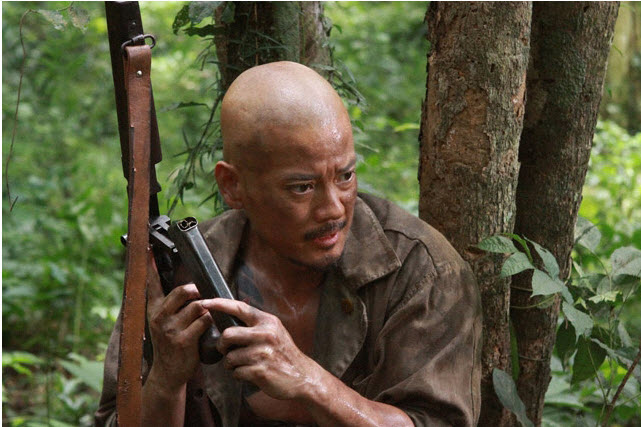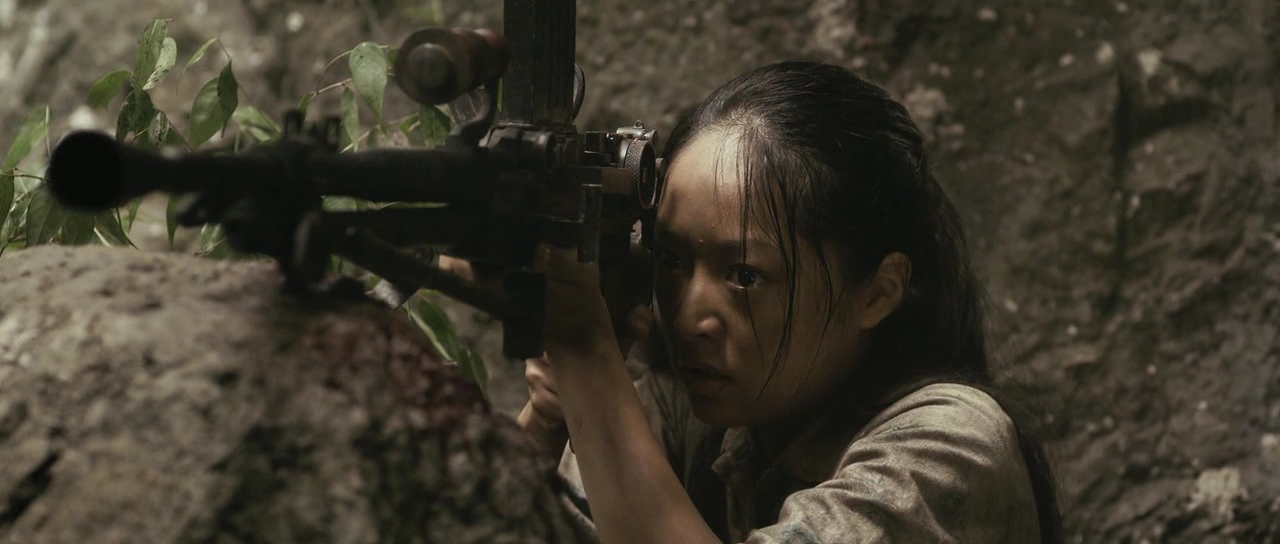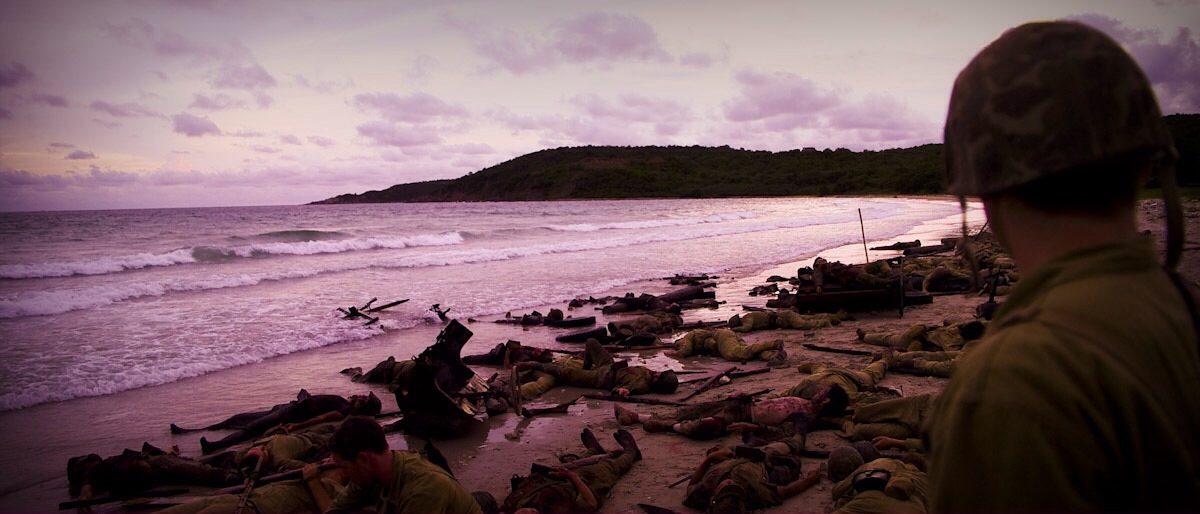Oba the Last Samurai
Based on an amazing true story, ‘Oba the Last Samurai’ follows the story
of Captain Sakae Oba, who, after a massive defeat during the battle of
Saipan in 1944, leads surviving soldiers into the jungle of Mt. Tapochau
where they set up camps for civilians and resisted capture for 516 days,
continuing to fight four months after hostilities had officially ceased.

The film follows a two pronged narrative from the perspectives of both
Japanese and American forces, a unique structure that lends the film its
own identity. Shot by two different units helmed by Hideyuki Hirayama
and Cellin Gluck, the film seamlessly integrates the distinct aesthetic
of each director into a cohesive whole; a majority of the Japanese shots
are wide, sweeping shots with a lot of breathing room, whereas scenes
focusing on the U.S personnel are more tightly framed and
claustrophobic.
Brought up on the gung-ho American World War 2 films regarding the
Pacific Theatre, it’s refreshing to get an unflinching portrayal from
the perspective of the other side. As a Japanese production, there is a
lot of dialogue and scenes associated with the traditional Bushido codes
of honour and respect that can come off as kind of self aggrandising,
but for the most part the story is even handed.

The film
has its fair share of battle scenes, such as a vivid depiction of the
skirmishes leading up to the victory over Japanese forces on Saipan.
These scenes are kinetically shot, and aside from some dodgy CGI, easily
stand up to the exemplary standard of Hollywoods biggest blockbusters,
replete with some satisfyingly gory deaths.
However,
‘Oba’ is more concerned with the personal toll of war rather than
glorifying the horrors of battle, with heavy emphasis on the emotional
states of the soldiers. Despite the declaration of peace, Oba and his
troops remain mentally at war, with each handling their situation in
different ways - Superior officers throw themselves onto their swords to
avoid the shame of being captured while others steadfastly refuse to
surrender, seeking revenge on Allied Forces for the deaths of their
friends and loved ones.
Conversely, the U.S forces attempt to secure the island and end the
conflict with Oba’s men by trying to convince them that the war is over
and lend aid to the wounded, but Oba and his troops refuse to believe
that Japan could have fallen, believing this to be a trick by the U.S
Military to lure them out to slaughter, leading to a stalemate.

The acting by the Japanese cast is superb, with a myriad of emotions
often conveyed through a simple look. Many of the troops have their own
personalities, and it’s amusing to see many tropes from war films, such
as the hot headed private, the stoic commander and grizzled battle
veteran applied to men who would usually be faceless cannon fodder in
most Western productions. The characters never become caricatures
though, which speaks volumes.
The American cast is passable, with Sean McGowan handling the role of
the main proponent of amicable conflict resolution, Captain Herman
Lewis, relatively well. Daniel Baldwin chews the scenery, horrendously
channelling every hard ass military man cliché under the sun... And
rather poorly at that. Thankfully his role is relatively minor and he is
quickly replaced by the far more capable Treat Williams, leading one to
assume that Baldwin’s presence was solely to have a ”star name” on the
bill.
Personally, I found that the film kind of stalled during Baldwin’s
scenes, maybe because I was aghast at his agonising attempt at acting,
but it falls into a much smoother narrative once he vacates the picture.
Another small bone of contention is McGowan’s overwrought narration;
although clearly for exposition purposes, it comes off as superfluous,
or even worse, intrusive. Overall, some of the acting is stilted and
unnatural but the effort of the Japanese cast more than compensates for
this.

Video &
Audio Quality
Although
the image can be kind of soft on occasions, for the most part it’s of
high quality, with no compression artefacts visible during darker
scenes. The beauty of the jungle is vividly realised and contrasts
nicely with the slightly sterile sepia tones of the U.S scenes – A
visual representation of the difference between the opposing sides. The
Japanese were more attuned to nature, living off the land and using the
environment to their advantage, where the U.S relied on setting up camp
by building barracks and shaping the landscape to accommodate their
needs; the cinematography illustrates this dichotomy perfectly, all
displayed in 16:9 widescreen.
Sound is
adequate, with levels consistent even during the frenetic battle scenes.
The score can be a little overbearing at times and dialogue can be a tad
murky but the addition of subtitles negates this for the most part.
Audio is only available in 2.0 channels, which is a bit of a shame, as
the film would have benefitted from immersive 5.1 surround sound,
especially during the battle scenes.
Special
Features
Aside
from a trailer, ‘Oba the Last Samurai’ is the very definition of a bare
bones release, even lacking chapter selection. This is disappointing, as
a documentary of the real life inspiration for the film or even a
commentary would have been welcomed.

Final
Thoughts
Masterfully portrayed by Yutaka Takenouchi, Oba is a sympathetic
character struggling to reconcile his moral integrity with the demands
of war and this performance is the linchpin that holds the film
together.
Definitely not a mainstream film by any standard, ‘Oba the Last Samurai’
is a rewarding experience for fans of world cinema and the more
adventurous viewer. Although let down by some of the stilted
performances of the American cast, the film rises above these
shortcomings and is a fascinating insight into the mind of the soldiers
that fought on the losing side of one of the most important wars in
history.